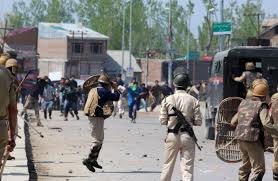The humanitarian logistics are a special kind of logistics, where the supply and demand is uncertain. As the length of the supply chain increases the cost and complexity within a city, the logistics are always related to the commercial activities and do not take into account the occurrence of an emergency. Urban logistics are defined as “the process of optimizing the logistics and transportation activities by private companies, with the support of advanced information systems in urban areas, considering aspects related to traffic congestion, vial safety, and the energy savings within a framework of economic market”. Different logistics challenges to meet the needs of the inhabitants within an urban area. The distribution of goods is crucial to the economic movement in the city and the welfare of all of its inhabitants in an equitative way.
The latter fact directly affects congestion, pollution, energy consumption, road safety, urban space utilization, living and social needs. The problems of urban freight distribution and any disaster affect a wide range of stakeholders: the service providers (voluntary carriers, emergency logistics operators, medical and security services, among others), the beneficiaries (citizens, vulnerable groups, etc.), international, national and local authorities. To carry out the attention of inhabitants, the distribution centers (DC) are used to fulfill the function of integrating the products in the emergency facilities and to link donors and potential beneficiaries, guaranteeing humanitarian aid distribution. Traditionally these distribution centers require adequate space to carry out several commercial activities, and they are located outside the urban areas because of related public policies.
The logistics centers concentrate and redistribute the freight, regulate vehicular traffic and articulate freight units from different geographical locations. They also improve the productivity of transportation operations, capture significant volumes of cargo, allow efficient organization of consolidated shipments with combined freights to different customers, and they are also a node of articulation of different transportation modes. Given the advantages of logistics centers, they are increasingly being incorporated in the plans and programs of urban land use. While any disruption of the freight unit (consolidation or de consolidation) and shipping (transportation mode shift) involves costs. The operation logistics center allows companies to manage the constraints due to municipal regulations and focus on a centralized urban as possible to avoid physical distribution costs deliveries with multiple stops and guaranteeing to get savings. When any disaster occurs, the nearest the distribution center is located, the people can access faster to prior humanitarian aid. Therefore, a logistics support platform within the urban area can accomplish both, the commercial activities and the humanitarian logistics.
Click here for government certification in Logistics & Supply Chain Management





6 Comments. Leave new
This is a very informative article.Before reading this, I had a very narrow knowledge about urban logistics. Thanks for enlightening us Arudhra.
Informative one..Earlier I was not aware about this concept..Easy to understand this concept. .
Its an informative article…!
well explained
Informative one:)
Got ot modernize all the Field 😀
Very well codefied 😀
Good work 😀